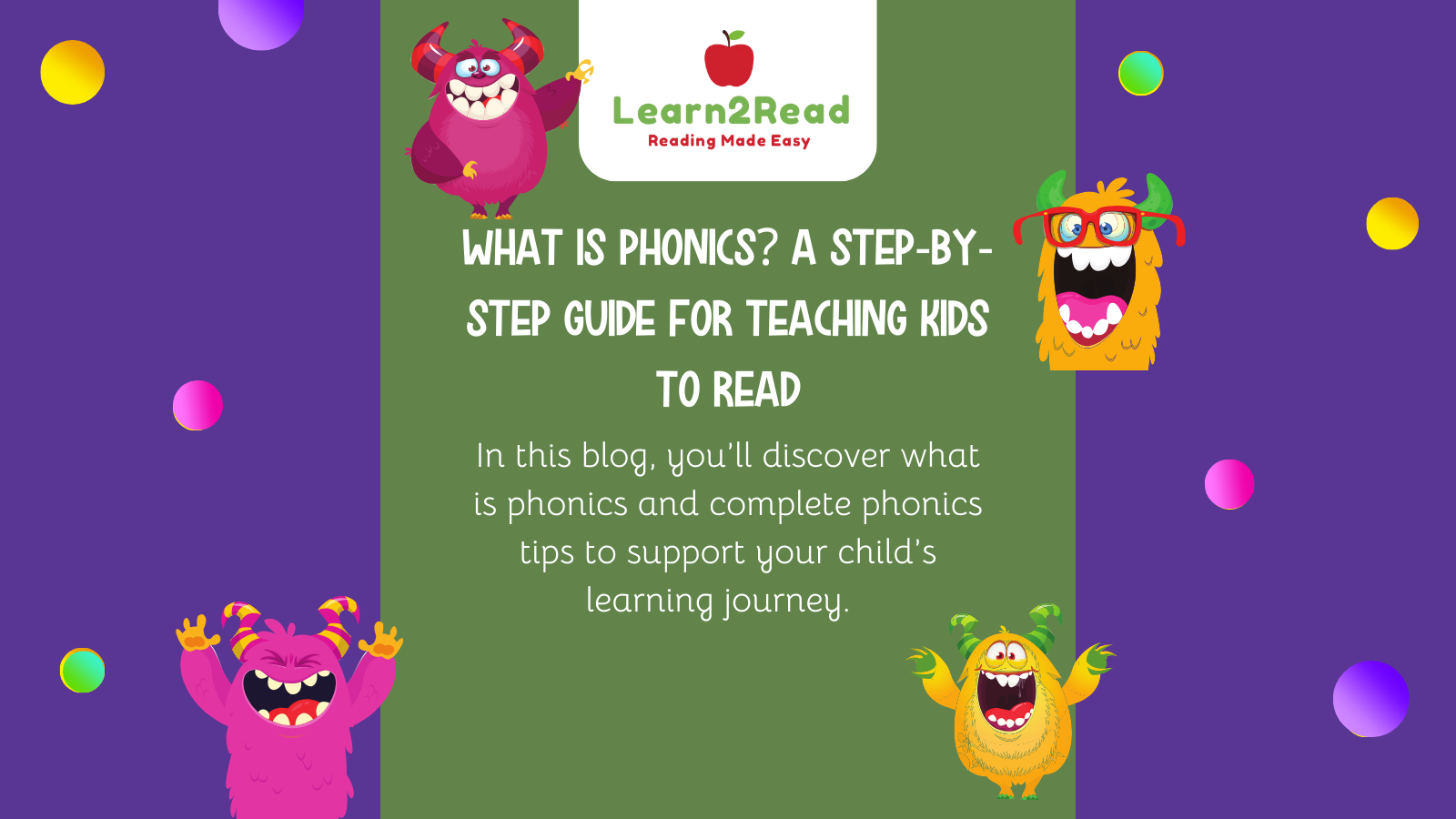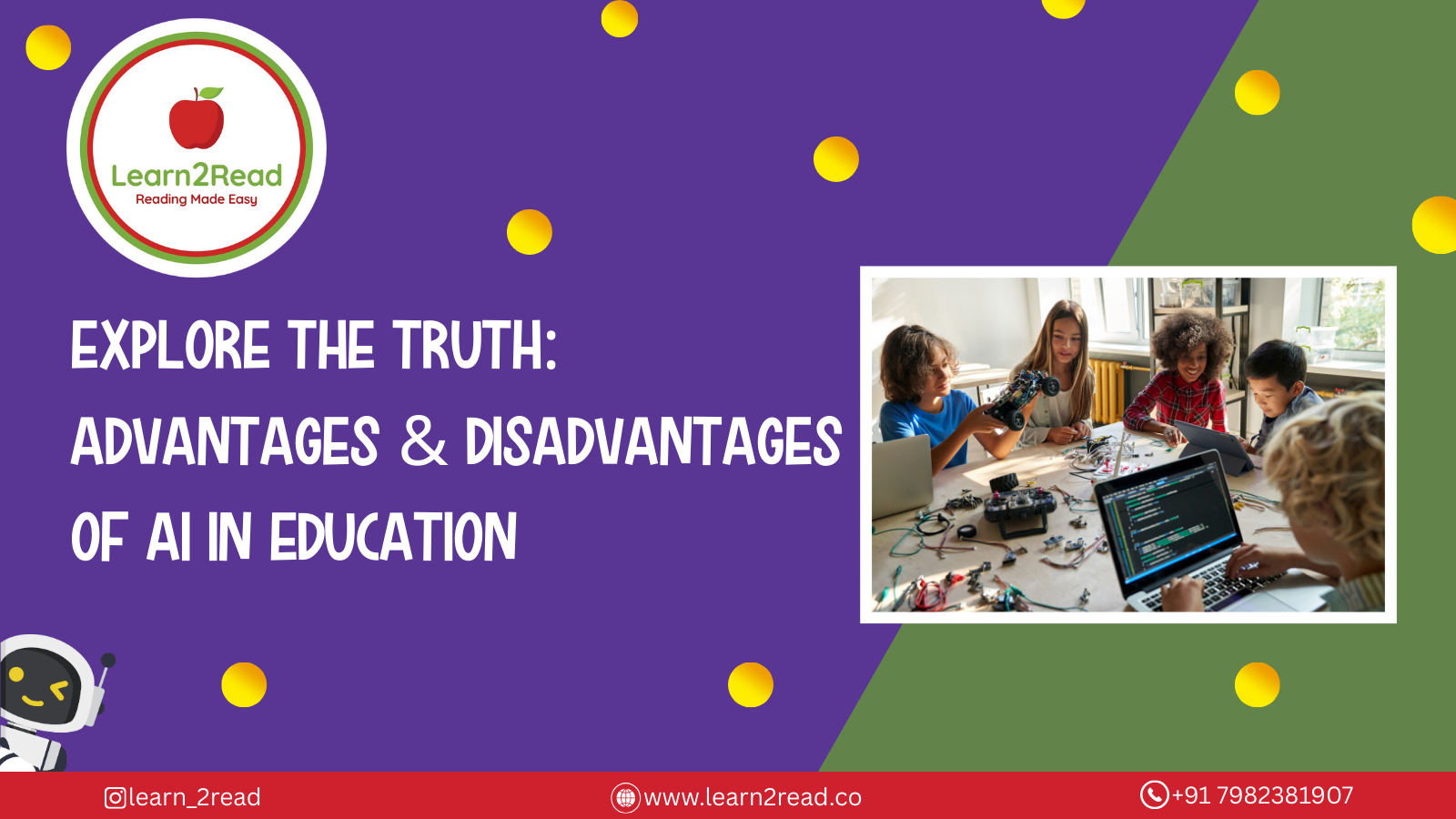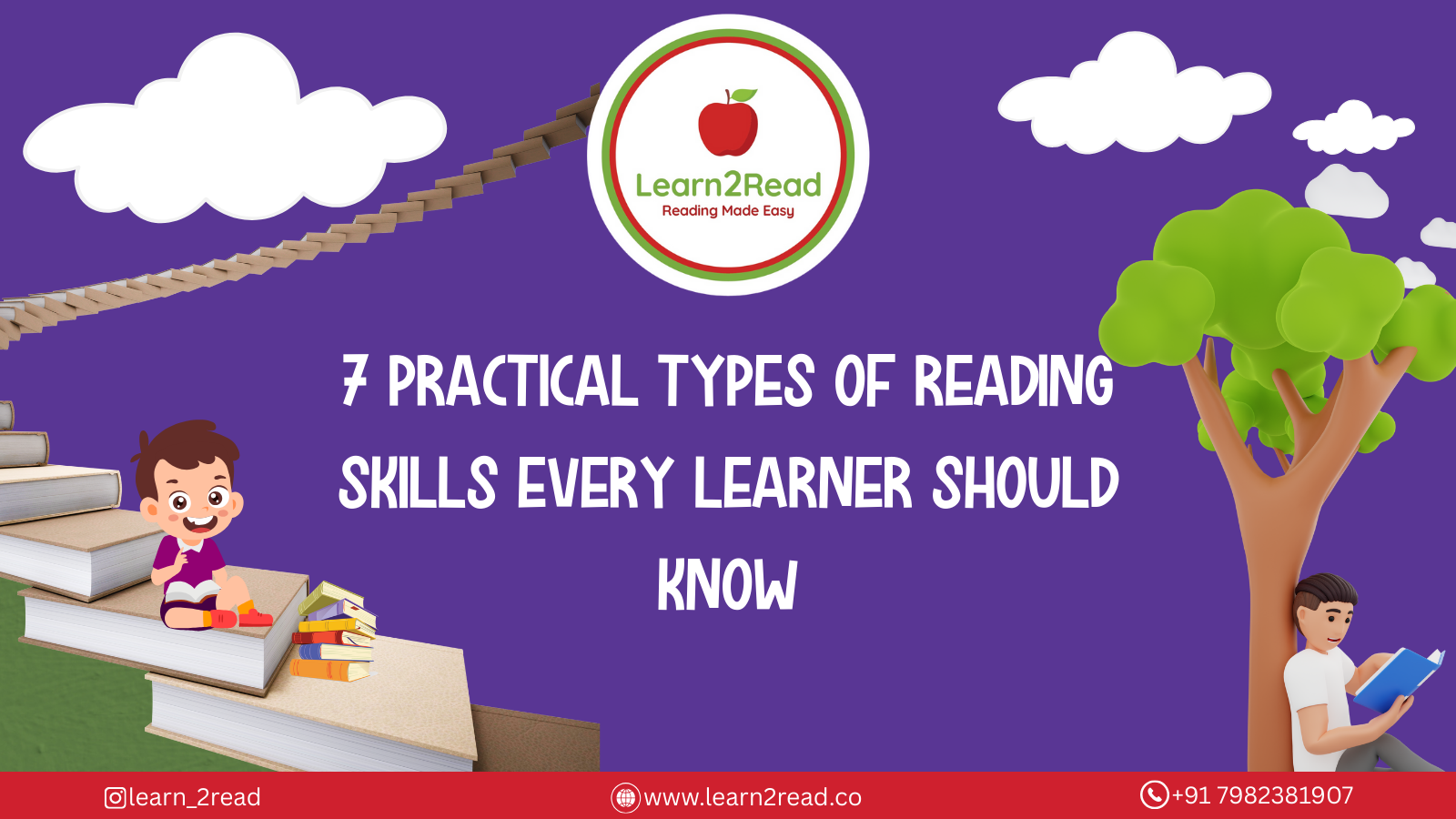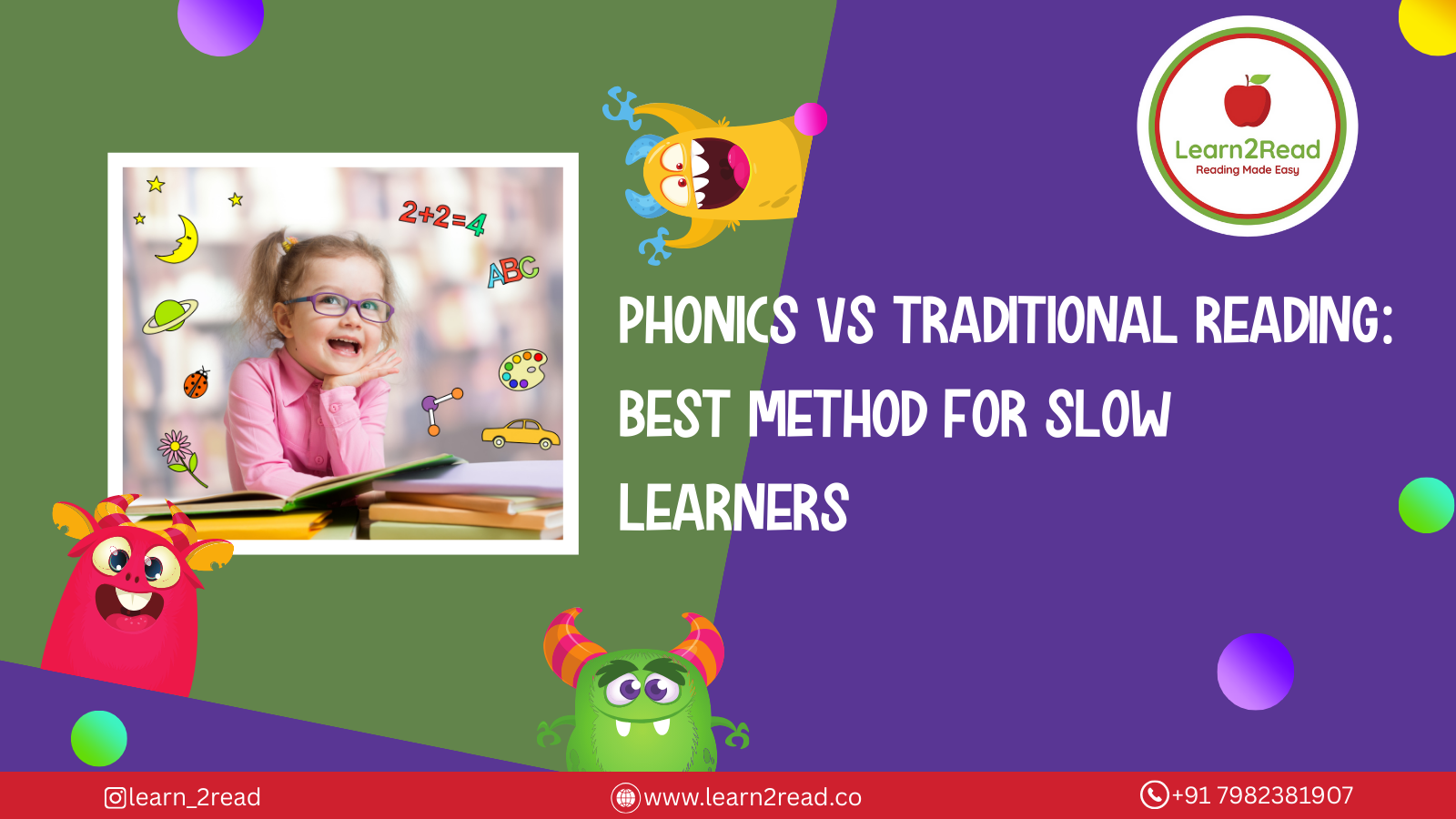19 September 2025
What is Phonics? A Simple Guide for Parents & Teachers

What is Phonics? A Simple Guide for Parents & Teachers
posted on : 9 September 2025
Have you ever noticed some kids pick up reading quickly, while some require time? Well, the answer is phonics. Before your kid reads words, they should crack the code of sounds and letters.
Teaching your kid to read might make you confused or frustrated, especially when you’re not sure where to begin. But you’re not alone. This is where phonics comes to the rescue.
Phonics is a reliable method that helps kids connect letters with sounds. However, if you’re still confused about using phonics the right way, then this blog is for you. You will get a detailed guide on phonics and practical tips to follow.
Let’s read further about phonics and make learning fun and easy.
What is phonics?
In simple words, phonics is a teaching method for reading by connecting sounds with the letters or groups of letters. It’s a concept that words are made up of letters, and these letters represent specific sounds.
For example:
- The letter ‘b’ makes the sound /b/ as in bird.
- The letters ‘ch’ together make the sound /ch/ as in chocolate.
You need to teach your child the connection between the words in written text. With the sounds of spoken language. Once the understanding of the letters and sounds is clear, your children can decode the words easily.
What is phonics in reading? And how does it help?
You might find it overwhelming to teach kids phonics in reading. However, with proper resources, engaging methods, teaching phonics will be easier. Let's understand how crucial phonics is for learning to read.
Phonics in reading is a concept that teaches the relationship between letters and their respective sounds. There are 26 letters in the English language, but 44 distinct sounds. So, here phonics fills the gap. It helps children connect the letters and sounds.
Learning phonics can help your children in many ways. Including,
- Phonics helps to recognize individual sounds. For example, s sounds like /s/.
- It helps to understand the letter combinations. For example, the ch and sh sounds.
- Phonics helps to blend sounds to read the full word. For example, s-k-y becomes sky.
- You can segment words into sounds. For example, bird into b-i-r-d.
Thus, phonics supports reading development. Along with guiding the children to memorize the sounds, not just the words. It’s a skill development, which makes children read independently by decoding the words.
Overall, it's a systematic way to understand how the sounds give meaning to written text in reading.
What is Letters & Sounds?
Letters and Sounds is a teaching approach for phonics. It involves linking the letters with their corresponding sounds. Blending these sounds helps children to read words. This programme is structured in 6 phases. Let’s understand it,
- Phase 1: The focus is on listening skills and the ability to discriminate between different sounds.
- Phases 2-4: During these phases, children learn which letters represent which sound. Moreover, they learn to blend and segment the words.
- Phase 5: In this phase, alternative spellings and pronunciation are being taught.
- Phase 6: At last, children learn spelling skills and develop reading fluency.
Effective Strategies to Teach Phonics to Your Children
- Begin with the letters and sounds relationship: Introduce letters and their respective sounds to your children.
- Try Multi-Sensory Technique: Add visuals, flashcards, worksheets, songs, and writing exercises to your kid’s learning.
- Incorporate Games & Stories: The best way to teach phonics to your children, engage them in phonics games, rhymes, and storybooks. Playing as a technique to learn is undoubtedly effective.
- Prioritize Repetition and Reviews: Make sure you’re repeating previous learned sounds before heading towards the new ones. Plus, review your child's performance for their progress.
Let the kids practice these strategies, and they will improve their reading fluency over time. Now you can read the tips and tricks to use to support your child’s learning.
4 Practical Phonics Tips to Boost Learning
- Daily Practice in Short Sessions: Incorporate daily phonics practice in the child’s routine. Each day, a 10-15-minute session is enough.
- Engaging Phonics Games & Books: Introduce phonics to your kids in a fun and engaging way. Let them learn distinct sounds and patterns through interactive games, stories, or books.
- Adding Multi-Sensory Technique: Your children should enjoy learning, rather than feeling overwhelmed. For this, make them learn phonics through visuals, sounds, movements, and writing. Such as, you named the letter ‘R’ and now the kid will trace the objects, which start with the /r/ sound. Like, a ring or a ruler.
- Be Patient and Encouraging: Every child has their own learning speed. So, you need to be a little patient with your child and support them throughout. Besides, celebrate their small wins and encourage them to perform better.
Final Thoughts
Phonics is a foundation that unlocks reading skills. Introduce letters and sounds to your child in a fun way. This way, reading will be more exciting and less of a challenge for them. Like other aspects of life, consistency is the key to learning phonics in reading.
Remember, every child has their own pace. You need to be patient and encouraging to make your child confident in reading. Engaging phonics games, stories, and interactive worksheets are the best strategies to include in your kid’s routine. Hence, we’ve covered what is phonics and the tips you can follow. Ultimately, your approach and support will make a huge difference in your child's journey.
Learn2Read doesn’t just teach to read, but opens doors for imagination and lifelong success. Start your Free Trial Class Today!
FAQs
1. What is phonics, and examples?
Phonics is a teaching method for reading by connecting sounds with the letters or groups of letters. It involves linking the letters with their corresponding sounds. Blending these sounds helps children to read words. For example, the letter a makes the sound /a/ as in ant.
2. What are letters & sounds?
Letters and Sounds is a teaching approach for phonics. It involves linking the letters with their respective sounds. Once your child is familiar with the sound patterns, you can teach them the blending of words. All this will help them develop reading, writing, and speaking skills.
3. What are 5 examples of phonics sound?
The 5 examples of phonics sounds are s, ai, sh, ch, and ee. The words that can be framed with these sounds are sun, rain, ship, chin, and tree.
Latest Posts


19 September 2025
Types of Reading Skills and How to Develop Them in Kids

19 September 2025
Phonics vs Traditional Reading: What Actually Works for Early Learners?

19 September 2025



